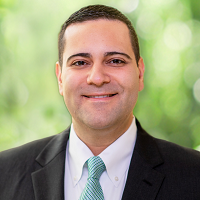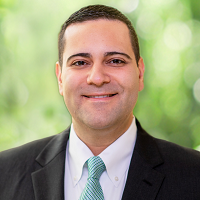Maximize Charitable Giving Tax Savings and Give All Year
Thinking of December as ‘contribution season,’ paired with using tax-savvy giving tools, can help you spread the generosity all year long.


Most donors tend to prioritize charitable giving at the end of the year. It makes sense. Individuals and families often feel extra charitable around the holidays. It’s often the time when nonprofits are doing their biggest calls for donations, and the pending New Year’s Eve ball drop is a sparkling reminder of the deadline to make any financial changes to decrease that year’s tax liability. That trifecta, combined with a clearer understanding of one’s taxable income for the year, leads to approximately 30% of all charitable donations being made in December, according to Network for Good.
For a majority of donors, giving is driven by more than a desire for tax benefits. People give because they want to have a positive impact on the charities and causes they care about. Philanthropy is part of who they are. Smart tax decisions, investment decisions and timing decisions are essential elements donors can take into consideration to maximize that impact.
But as any nonprofit or charitable-minded person can tell you, that impact extends beyond giving season — which is defined as the time between Giving Tuesday (the Tuesday after Thanksgiving) and New Year’s Eve. Nonprofits have a year-round need for support, often accentuated by disasters and other immediate calls for monetary support.
From just $107.88 $24.99 for Kiplinger Personal Finance
Become a smarter, better informed investor. Subscribe from just $107.88 $24.99, plus get up to 4 Special Issues

Sign up for Kiplinger’s Free Newsletters
Profit and prosper with the best of expert advice on investing, taxes, retirement, personal finance and more - straight to your e-mail.
Profit and prosper with the best of expert advice - straight to your e-mail.
Benefits of a Year-Round Charitable Giving Mindset
Regardless of the time of year you make a charitable contribution or donation, you’ll reap the tax benefits when you file taxes for that year. Often times, individuals who rush to support charities at the end of the year do so because they want the charitable deduction for that year but hadn’t given earlier in the year. This can be for many reasons — from forgetting or not knowing where to give, to not having the time to decide where to give or their accountant giving a nudge during giving season specifically for tax purposes.
But traditional charitable giving strategies focused on year-end tend to create opportunity gaps during the rest of the year. Donors can feel pressured to choose between giving that maximizes tax benefits and giving that maximizes charitable impact. The reality is these goals should be — and can be — aligned. Being strategic and thoughtful in how one gives, coupled with lowering your tax bill, means more can go to charity.
Giving Tools Make Year-Round Charitable Support Easier
Adopting a year-round giving mindset and pairing it with the right strategic giving tool can help philanthropically minded individuals make their donations go further while continuing to realize meaningful tax benefits. Often, a donor-advised fund (DAF) has the right structure to help donors do both. A DAF is a charitable giving tool designed exclusively to invest, grow and give assets to charities for meaningful and lasting impact. All contributions into a DAF are irrevocable, ensuring the funds are designated for charitable purposes under IRS regulations.
When donors open a DAF, they first make a tax-deductible contribution to their account, which enables them to recommend grants to their favorite charities. When donors contribute to their DAF account, they can take an immediate tax deduction, with additional opportunities for tax benefits through minimized capital gains as well as tax-free growth of the assets in the DAF. All of these advantages can help donors shift from a December contribution and giving strategy to supporting causes all year long with a consistent, ongoing cadence.
While DAFs are one of the most flexible and cost-effective strategic giving tools, there are other vehicles that achieve similar outcomes and are often leveraged depending on a donor’s unique goals. These include private foundations, charitable trusts and charitable gift annuities.
Difference Between Contributions and Charitable Giving
The biggest mindset shift donors should recognize is that, with the right philanthropic strategy, charitable contributions and charitable giving can – and often should — be separate. DAFs, and other grantmakers such as private foundations, allow donors to contribute funds whenever it is most advantageous for the donor. This is typically around the end of the year, though not always.
Once the funds are contributed, they can be granted to registered and approved 501(c)3 charities at any time throughout the year or in future years. With this approach, donors can retain the tax benefits and greater financial impact of their donation while also having the benefits of tax-free investment growth and the flexibility to make donations throughout the year when the charity or cause needs it most.
Contributing Throughout the Year for Bigger Tax Benefits
There are a few instances in which contributions could be more beneficial throughout the year. Here’s one example: If you’re holding a low-basis stock that is performing very well in the market at a different time in the year, you may consider donating it directly to a charity that accepts appreciated stock or by contributing it to a DAF or other charitable vehicle — all of which enable you to realize the tax benefits. Of course, timing the market is rarely an advisable strategy, but this approach can make sense in certain circumstances after a conversation with your financial adviser and tax experts.
Complex assets are another example of contribution opportunities that don’t often conveniently come at the end of the year. For example, nontraditional illiquid assets including real estate and private company stock have their own timelines and considerations that won’t necessarily align with December. With the right approach, these complex assets could be contributed at any time of year while still realizing the same tax benefits.
In short, “giving season” at year-end should become “contribution season.” With this strategy, donors would look to maximize the tax benefits of a charitable contribution at year-end while planning for and pursuing opportunities to recommend grants all year long.
Driving Impact Year-Round — and Beyond
Leveraging dedicated giving tools allows donors to benefit from tax-smart investing strategies year over year, ultimately increasing philanthropy and maximizing its impact. This approach also empowers donors to separate the act of contributing dollars for philanthropic purposes and the actual granting of those funds to nonprofits. Instead of one giving season at the end of the calendar year, donors can support nonprofits year-round, advancing their missions, making an impact on the world and not missing out on meaningful tax benefits.
A year-round mindset backed by a tool like a DAF empowers donors to give over a longer period and at any time they see fit. It’s a simplified approach to charitable giving that creates powerful potential for impact outside of tax or giving season.
This material has been prepared for informational purposes only, and is not intended to provide, and should not be relied on for, tax, legal or accounting advice. You should consult your own tax, legal and accounting advisors before engaging in any transaction.
Profit and prosper with the best of Kiplinger's advice on investing, taxes, retirement, personal finance and much more. Delivered daily. Enter your email in the box and click Sign Me Up.

Mark Froehlich joined Vanguard Charitable, a 501(c)(3) public charity sponsoring donor-advised funds, as chief financial officer in 2019. As a certified public accountant, he works to oversee the nonprofit’s finance and operations functions. An experienced financial leader, Mark has always maintained a strong connection to the nonprofit sphere. Most recently, he was the chief financial officer at the Philadelphia Foundation.
-
 Forget FIRE: Why ‘FILE’ Is the Smarter Move for Child-Free DINKs
Forget FIRE: Why ‘FILE’ Is the Smarter Move for Child-Free DINKsHow shifting from "Retiring Early" to "Living Early" allows child-free adults to enjoy their wealth while they’re still young enough to use it.
-
 7 Tax Blunders to Avoid in Your First Year of Retirement
7 Tax Blunders to Avoid in Your First Year of RetirementA business-as-usual approach to taxes in the first year of retirement can lead to silly trip-ups that erode your nest egg. Here are seven common goofs to avoid.
-
 How to Plan for Social Security in 2026's Changing Landscape
How to Plan for Social Security in 2026's Changing LandscapeNot understanding how the upcoming changes in 2026 might affect you could put your financial security in retirement at risk. This is what you need to know.
-
 7 Tax Blunders to Avoid in Your First Year of Retirement, From a Seasoned Financial Planner
7 Tax Blunders to Avoid in Your First Year of Retirement, From a Seasoned Financial PlannerA business-as-usual approach to taxes in the first year of retirement can lead to silly trip-ups that erode your nest egg. Here are seven common goofs to avoid.
-
 How to Plan for Social Security in 2026's Changing Landscape, From a Financial Professional
How to Plan for Social Security in 2026's Changing Landscape, From a Financial ProfessionalNot understanding how the upcoming changes in 2026 might affect you could put your financial security in retirement at risk. This is what you need to know.
-
 6 Overlooked Areas That Can Make or Break Your Retirement, From a Retirement Adviser
6 Overlooked Areas That Can Make or Break Your Retirement, From a Retirement AdviserIf you're heading into retirement with scattered and uncertain plans, distilling them into these six areas can ensure you thrive in later life.
-
 I'm a Wealth Adviser: These Are the 7 Risks Your Retirement Plan Should Address
I'm a Wealth Adviser: These Are the 7 Risks Your Retirement Plan Should AddressYour retirement needs to be able to withstand several major threats, including inflation, longevity, long-term care costs, market swings and more.
-
 High-Net-Worth Retirees: Don't Overlook These Benefits of Social Security
High-Net-Worth Retirees: Don't Overlook These Benefits of Social SecurityWealthy retirees often overlook Social Security. But timed properly, it can drive tax efficiency, keep Medicare costs in check and strengthen your legacy.
-
 Do You Have an Insurance Coverage Gap for Your Valuables? You May Be Surprised to Learn You Do
Do You Have an Insurance Coverage Gap for Your Valuables? You May Be Surprised to Learn You DoStandard homeowners insurance usually has strict limits on high-value items, so you should formally "schedule" these valuable possessions with your insurer.
-
 8 Practical Ways to Declutter Your Life in 2026: A Retirement 'Non-Resolution' Checklist
8 Practical Ways to Declutter Your Life in 2026: A Retirement 'Non-Resolution' ChecklistHere's how to stop wasting your energy on things that don't enhance your new chapter and focus on the things that do.
-
 To Retire Rich, Stop Chasing Huge Returns and Do This Instead, Courtesy of a Financial Planner
To Retire Rich, Stop Chasing Huge Returns and Do This Instead, Courtesy of a Financial PlannerSaving a large percentage of your income, minimizing taxes and keeping spending in check can offer a more realistic path to retiring rich.